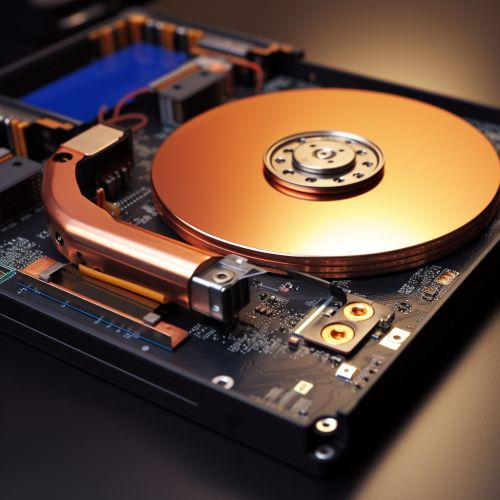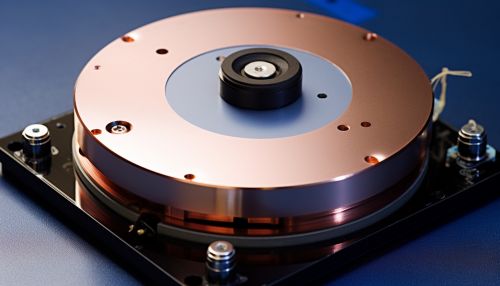Disk storage
Introduction
Disk storage, also known as disk drive storage, is a general category of storage mechanisms where data is recorded by various electronic, magnetic, optical, or mechanical changes to a surface layer of one or more rotating disks. This form of storage is non-volatile, meaning the data does not disappear when the computer or device is powered off.
History
The concept of disk storage originated with the invention of the magnetic disk by Gustav Tauschek in 1932 in Austria. Tauschek's original model was a disk of thin metal. The first commercial hard disk drive was the IBM Model 350 Disk File that came with the IBM 305 RAMAC computer in 1956. It had 50 24-inch platters and a total capacity of five million 6-bit characters (3.75 megabytes).
Types of Disk Storage
There are several types of disk storage that vary based on their structure, functionality, storage capacity, and use. The most common types include:
Hard Disk Drives (HDD)
Hard Disk Drives (HDD) are the most common type of disk storage and are found in most desktop computers and laptops. They use magnetic storage to retrieve and store data on one or more rigid rapidly rotating platters coated with magnetic material.
Solid State Drives (SSD)
Solid State Drives (SSD) are a type of disk storage that uses integrated circuit assemblies to store data persistently, typically using flash memory. They are known for their high performance, reliability, and durability.
Optical Disks
Optical disks, such as CDs, DVDs, and Blu-ray disks, are a type of disk storage that uses lasers to read and write data. They are commonly used for storing music, video, and data backup.
Floppy Disks
Floppy disks are a type of disk storage that was popular in the late 20th century. They are made of a thin and flexible magnetic storage medium sealed in a rectangular plastic carrier.
Disk Storage Operation
Disk storage operates by storing data in a random-access manner, allowing stored data to be accessed quickly in any random order. In operation, data is transferred to and from disk storage as needed by the computer, ensuring that data needed by the computer can be read from the disk and written to the disk.
Disk Storage Capacity
The storage capacity of disk storage has grown significantly over the years. Early disk storage options offered limited storage capacity, but advancements in technology have led to disk storage options that can store several terabytes of data.
Advantages and Disadvantages of Disk Storage
Disk storage offers several advantages, including its non-volatile nature, its ability to store large amounts of data, and its relatively low cost. However, it also has disadvantages, such as its vulnerability to physical damage, its slower speed compared to other storage options, and its energy consumption.
Future of Disk Storage
The future of disk storage is likely to see continued advancements in storage capacity, speed, and reliability. Emerging technologies, such as holographic data storage and DNA data storage, may also play a role in the future of disk storage.


